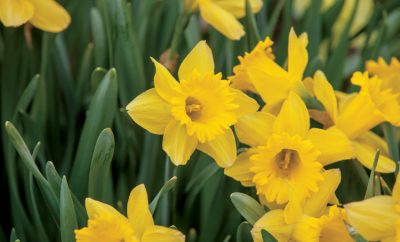Learn How to Avoid Common Basil and Impatiens Diseases

Photo credit: iStock/mzajac
As you head into a new gardening season, be on the lookout for a dreaded disease on two favorite summer annuals. Basil, among the world’s most popular herbs, is under attack by downy mildew. And bedding impatiens, loved by shade gardeners for mass plantings in the yard, can also be killed by downy mildew.
Downy mildew is a common fungus disease on many indoor and outdoor plants. For instance, plants in the squash family are susceptible in the vegetable garden. Indoors, African violets frequently develop the disease. The symptoms are similar: yellow leaves, spreading brown spots, dwarf growth, gray or tan fuzzy leaves. The soil-borne fungus easily spreads by spores through the air and water.
What to Do With Affected Basil
Carefully inspect the leaves and stems of plants before you buy them at the garden center. Don’t buy any plants that have brown marks. Over time, the leaves of affected plants turn yellow and brown splotches appear. Harvest any good leaves, dig up the diseased plant and put it in the trash. Clean your tools before using them on other plants.
The fungus disease remains in the soil for several years – whether the plant was in the ground or in a pot. Dump the soil in a pot and clean the container with a 10% bleach solution (9 parts water, 1 part bleach). Don’t plant basil in the same place in the ground next year. The fungus also contaminates the seed, so don’t save and replant it.
See more: How to Grow Fresh Herbs
Disease-Resistant Basil
Basil downy mildew is a huge problem for growers of these plants, retailers and those who grow the herb for the food industry. It is the country’s most popular cut annual herb.
The only way for growers to prevent the disease is to treat the plant with a fungicide. Many merchants are reluctant to buy edible plants treated with pesticides, so the best solution is resistant plants. Resistant plants are just that – resistant – but they are not immune if conditions are perfect for disease.
Thai and purple leaf basils are resistant to mildew disease. Rutgers University introduced four sweet basil varieties for growers and has released seed for the home gardener. The plants are labeled DMR, indicating Downy Mildew Resistant. Look for Rutgers Devotion DMR, Rutgers Obsession DMR, Rutgers Passion DMR and Rutgers Thunderstruck DMR.
In 2019, Proven Winners introduced Amazel basil, a sweet basil bred resistant to downy mildew. This one is only available as a plant. When browsing at nursery catalogs or in the garden center, look for those described as disease-resistant plants.
If you have battled this disease, consider buying seed and growing basil in a clean pot with fresh potting mix. Basil is easy to grow from seed.
See more: 3 Easy-to-Grow Annuals Pollinators Will Love
What to Do With Affected Impatiens
Only the bedding impatiens are affected by downy mildew. These are the plants usually purchased in four- or six-cell packs. They have been the primary summer annual for shady areas for decades. Impatiens downy mildew causes the plants to lose leaves and get smaller and smaller.
The disease has been around for nearly 10 years. It, too, stays in the soil for five years or more. So don’t replant bedding impatiens where diseased plants have grown. Plant lovers have switched to begonias, but for impatiens lovers, these are just not the same.
Disease-Resistant Impatiens
Premium annuals New Guinea impatiens and SunPatiens are resistant to the disease, but these are considerably more expensive than the bedding type.
Ball Horticulture introduced the brand Beacon two years ago, a hybrid bedding impatiens resistant to the disease. It comes in seven colors, with more added each year. The flowers are slightly larger than the other bedding impatiens, and the plants are vigorous growers. And yes, the folks at Ball say Beacons can be planted where impatiens downy mildew has been present.
Look for Beacon seeds in nursery catalogs or from online plant merchants. These plants have been slow to show up in garden centers, but look or ask for them.
About the Author
Jo Ellen Meyers Sharp blogs at hoosiergardener.com. Read five-star reviews at greatgardenspeakers.org, or subscribe to her award-winning newsletter at http://eepurl.com/gkfb91.
See more: How to Use Container Gardens to Bring Beauty to Small Spaces













 My Indiana Home is produced for Indiana Farm Bureau members. Our mission is to connect you with the food you eat, the Indiana farmers who grow it and a rural lifestyle that is uniquely Hoosier.
My Indiana Home is produced for Indiana Farm Bureau members. Our mission is to connect you with the food you eat, the Indiana farmers who grow it and a rural lifestyle that is uniquely Hoosier.
Leave a Comment